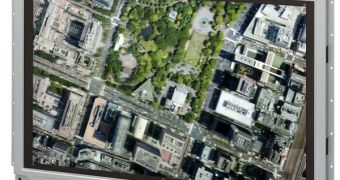Though 3D seems to be taking off quite well, and with many film makers planning to release their upcoming titles in 3D versions, display makers are doing their best to come up with the highest performing and most convenient monitors or TVs that will allow consumers to enjoy such movies at home. Unfortunately, the eye strain and lack of aesthetic value of the special glasses that such solutions require have slowed down the coming of 3D to the mainstream.
Obviously, manufacturers of such devices are doing their best to devise new technologies capable of eliminating the need for this eyewear. So far, however, there has been little luck. In fact, besides the upcoming Nintendo 3DS, which will have a very small screen, no glasses-free displays are known to be on their way. Toshiba Mobile Display seems to want to change this and, as such, has offered a preview of “a 21-inch autostereoscopic high-definition display for use in next-generation 3D monitors” that offer “significant reduction in eye fatigue.”
The panel uses a “multi-parallax” technology that generates nine separate images and provides a viewing angle of about 30 degrees. Granted, this is quite narrow compared with the 170 degrees or the 160 degrees enabled by good 2D displays, but it still allows some semblance of positional flexibility. As for the panel's actual specifications, the maximum resolution is of 1,280 x 800 and the brightness of 480 nits. Finally, the screen can be used in two distinct positions, each enabling a different experience.
“When used in the vertical position, the user faces the upright screen from the front as a person would usually use a 2D monitor. However, when used in the horizontal position, the user overlooks the stereoscopic image formed by the display lying face-up, as one would overlook a relief model. Compared with the front view, the 3D images seen face-up from the bird’s eye view are more stereoscopic and realistic.”
Unfortunately, consumers will probably have to wait for quite a while before seeing this technology on sale, considering the bezel-less nature of the prototype in the photo. Still, this solution at least shows that advancements are being made in this endeavor, which means that not too many months or years should pass before humanity can completely do away with 3D glasses.

 14 DAY TRIAL //
14 DAY TRIAL //